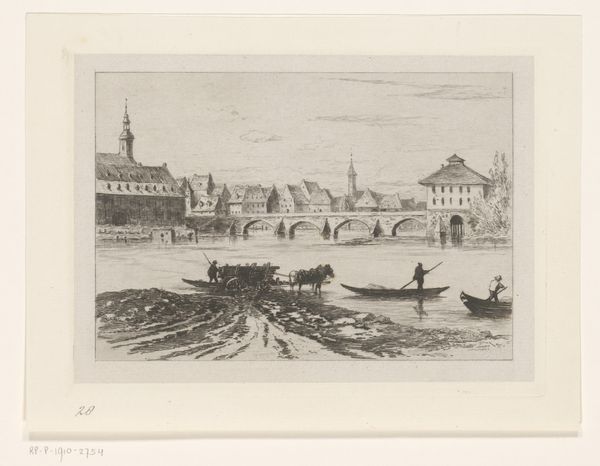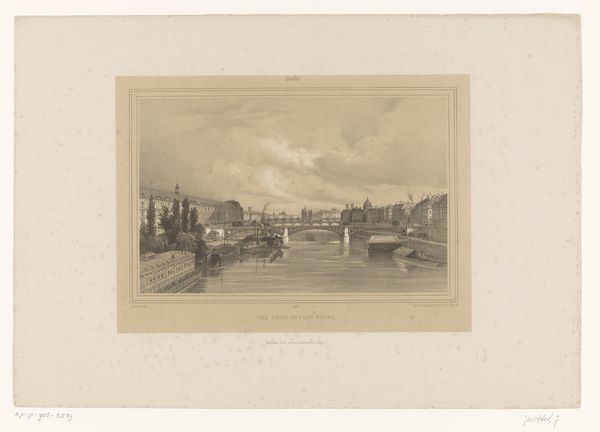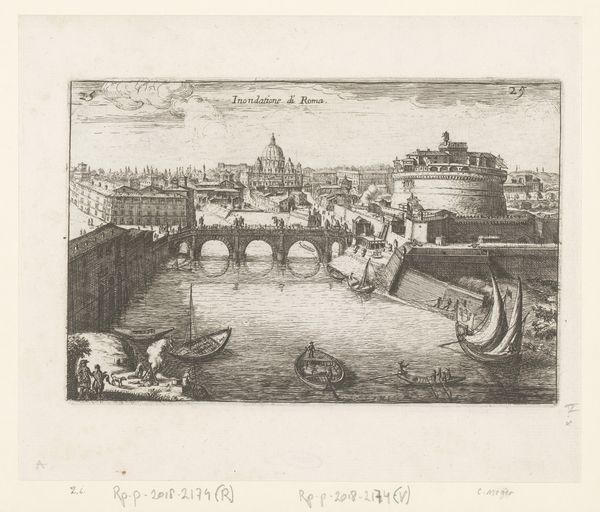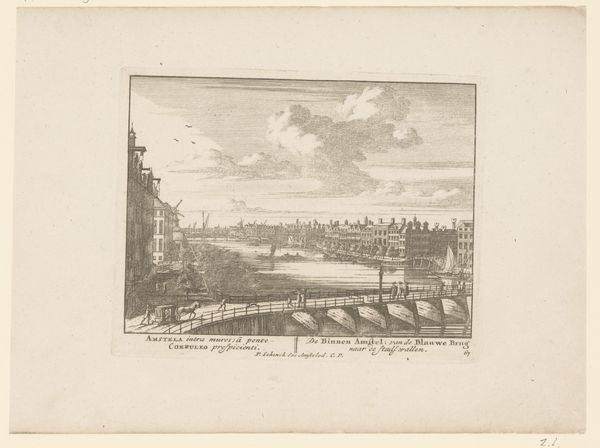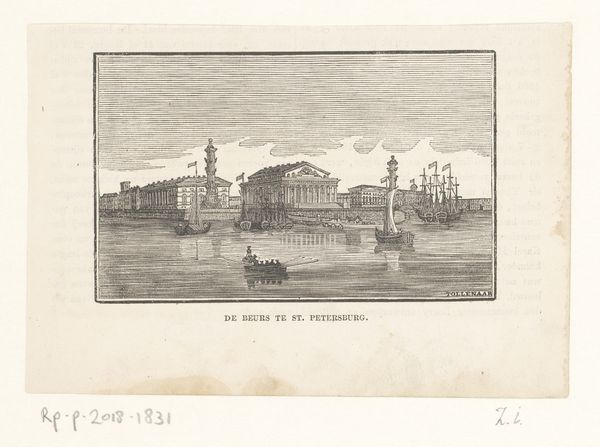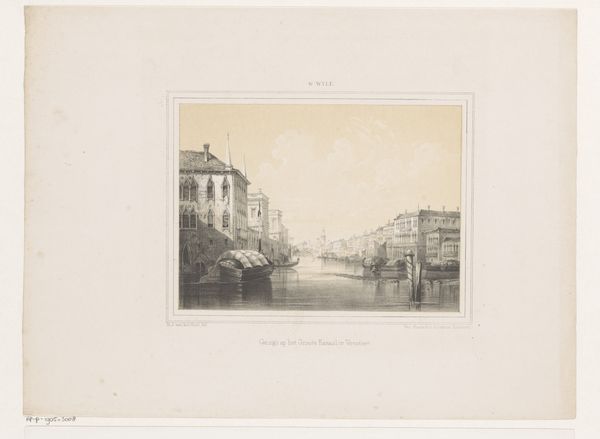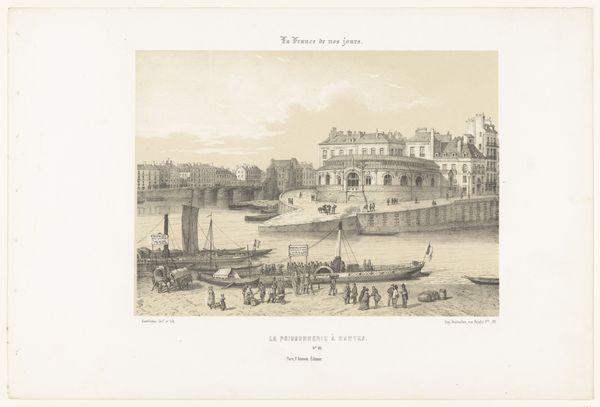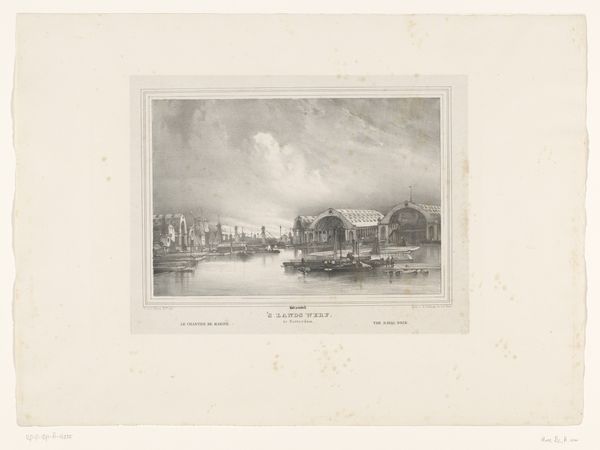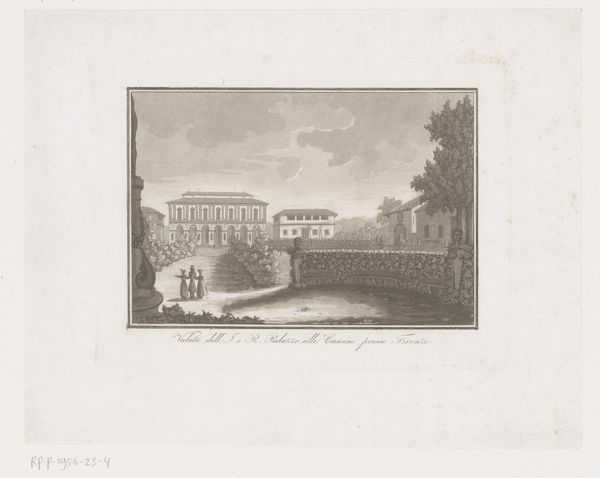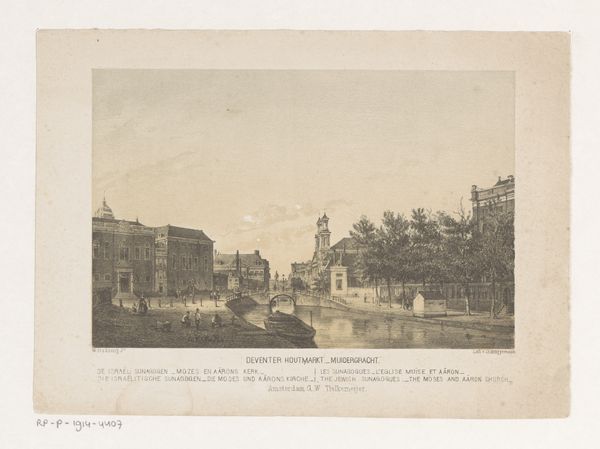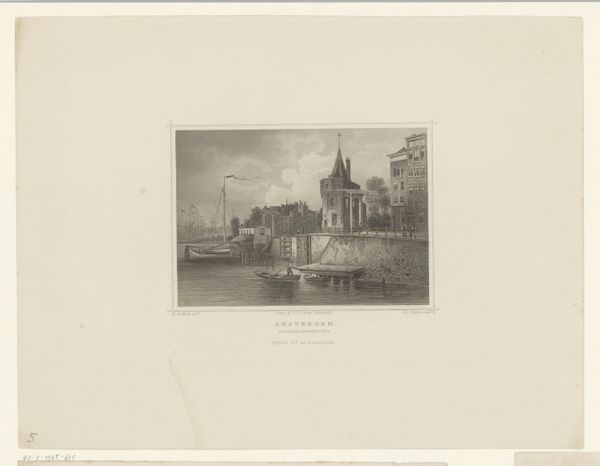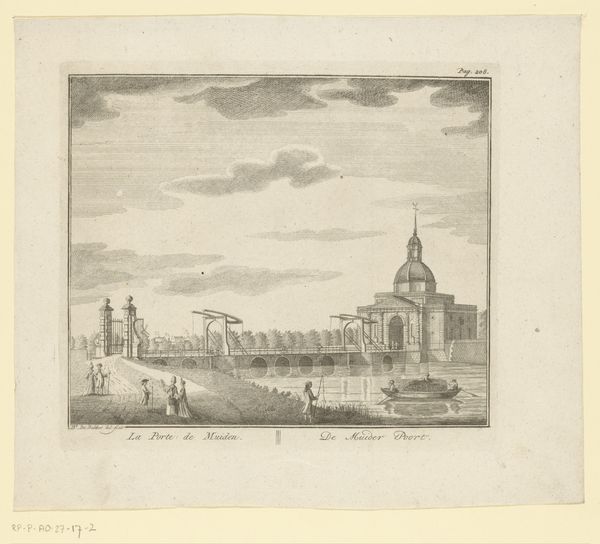
Gezicht op de Alte Brücke in Frankfurt am Main c. 1872
0:00
0:00
carelnicolaasstormvansgravesande
Rijksmuseum
print, etching
#
16_19th-century
#
dutch-golden-age
# print
#
etching
#
landscape
#
cityscape
#
academic-art
#
realism
Dimensions: height 112 mm, width 168 mm
Copyright: Rijks Museum: Open Domain
Curator: We’re looking at "View of the Alte Brücke in Frankfurt am Main," an etching by Carel Nicolaas Storm van 's-Gravesande, made around 1872. It’s currently housed in the Rijksmuseum. Editor: There’s a certain melancholy about this print. It feels muted, grey... almost dreamlike. I'm drawn to the river. What story does the etching process reveal? Curator: The print itself certainly invites reflection, and etching, of course, allows for very fine lines and detailed work. If we look closely at the architectural forms—the bridge arches and the buildings that line the riverfront—we see how he uses line and shadow to emphasize the city’s solidity, almost permanence. Editor: True, there’s that tension. But what about the figures in boats, or pulling carts? It seems that labor dominates the foreground. The very human scale emphasizes how this civic "permanence" is actively built and maintained. Where do those forms circulate, and who has access to that movement? Curator: You bring up an excellent point. The bridge has obviously stood as a significant link across the Main River for centuries, representing trade and communication. But the artist positions the figures centrally; their livelihoods clearly depend on this conduit. And that river—a flowing, changeable thing, carries both literal weight and its symbolic connections, time and travel, movement and transition. Editor: Indeed, the materiality here makes a strong point. As a printed work, what impact did its proliferation and reproducibility have? These weren't images for the elites, right? Curator: Etchings like this made cityscapes accessible to a wider audience beyond the traditional painting patrons. These affordable images shaped public perceptions of cities, and cultural pride through a new type of landscape tradition. The cityscape carries within it a portrait of society itself. Editor: Thinking about this artwork, it serves as a poignant reminder that all grand structures, cultural icons even, exist only through material support, social needs, and the hands of those who labor in its shadows. Curator: And the capacity to capture it, and share it with others.
Comments
No comments
Be the first to comment and join the conversation on the ultimate creative platform.
